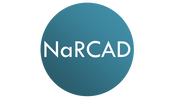|
An interview with Lisa Gruss, MS, MBA, Practice Transformation Project Lead, Quality Insights. Quality Insights is a non-profit organization that is focused on using data and community solutions to improve healthcare quality. The organization is based out of West Virginia and operates in Delaware, Pennsylvania, Virginia, and New Jersey. Quality Insights has developed an innovative academic detailing campaign to increase human papillomavirus (HPV) vaccination rates across Delaware. by Anna Morgan, MPH, RN, PMP, NaRCAD Program Manager Tags: Cancer, Detailing Visits, Vaccinations  Anna: Hi Lisa! We’re looking forward to learning about your academic detailing work as a multi-state non-profit, and your important work around HPV vaccination rates. We know these vaccinations are critical in preventing HPV, which can lead to many types of cancers. Can you tell us a little bit more about your current role and how it relates to academic detailing? Lisa: I’m focused on new business operations, science, and innovation. I implement new contracts that we receive through the Department or Divisions of Public Health, or any other funding sources. I also work with our Information Technology (IT) team to set up databases, work through any compliance issues, and define metrics. Additionally, I help manage the AD components of our contracts.  Anna: You’ve had great success with many of your academic detailing campaigns, specifically your HPV campaign that you’ve been working on. Can you walk us through how the topic was chosen? Lisa: We originally received a pilot grant through the Delaware Division of Public Health in 2018. The project was co-sponsored through their immunization program and the Delaware Cancer Consortium to improve the HPV vaccination rate in Delaware. According to the National Immunization Survey-Teen, the HPV vaccination rate for the initial dose in Delaware in 2018 was 73.9%. The Division looked at the relationship between cancer rates and low vaccination rates and saw a huge opportunity. Per the Centers for Disease Control and Prevention (CDC), 90% of the 34,800 HPV-related annual cancer cases in the United States could have been prevented with the HPV vaccination. The pilot was small but successful. In the spring of 2019, we received additional expansion of funding and added the academic detailing component. We’ve been working with practices to implement various services that tie in with academic detailing. We review data, work on evidence-based workflow modifications, provide HPV vaccination resources for staff and patients, and offer technical assistance.  Anna: Academic detailing dovetails so nicely with other interventions and services, creating more opportunities for impact and care improvement. It sounds like clinicians have been mostly amenable to the program—have any barriers come up throughout your HPV campaign? Lisa: To say we’ve had no barriers with access wouldn’t be true. We consider ourselves to be vendor neutral and ambassadors of the evidence - we don’t align and promote directly with any pharmaceutical company or insurance company. When looking at the broader scope of our work, it’s certainly complementary to what pharma might do, but we’re able to offer a broader menu of interventions beyond a vaccine. We’ve had some difficulty during the pandemic, like many AD programs, but we’ve found leveraging our past relationships to be key.  Anna: I’m sure those existing relationships have helped with building new ones. Have the practices that you’ve visited been involved in your program’s other academic detailing campaigns? Lisa: It’s a mix. The family medicine practices have been involved in a lot of our other projects, like opioid safety, cancer screening, prediabetes, diabetes, and maternal health campaigns. The clinics that specialize only in pediatrics, where we’ve also been implementing the HPV intervention, are new to academic detailing but have been extremely receptive to this campaign. Anna: I recently saw your team’s work on your HPV project published in the Delaware Journal of Public Health. Can you briefly describe the results? Lisa: Sometimes, it takes a small change to make a huge impact, and that is absolutely what we found with our project. For our engaged practices, we saw in a one-year span that the initial dose of HPV increased 8.1%. It’s important to note that practices usually picked more than one intervention. For example, some chose academic detailing along with workflow modifications, like nurse reminders or scheduling the patient for their next vaccine before leaving the office. Anna: Those are significant results, especially in such a short timeframe! What’s one thing you’d want our detailing community to take away from this project? Lisa: We found that practices were most successful when they chose an intervention, stuck with it, and set attainable goals. Some practices were at a 50% HPV vaccination rate and wanted to be at 80%. In those situations, we sat down with them and asked them to think about something more attainable, like a 5% increase in 6 months. Practices that committed to smaller increases not only met their goal, but slightly outperformed it. We’re excited to continue our work around this topic! Anna: Setting attainable goals and following through is so important for all projects. We’d love to hear more about your future work and how this campaign continues to grow and succeed! Have thoughts on our DETAILS Blog posts? You can head on over to our Discussion Forum to continue the conversation!  Biography. Lisa is a Practice Transformation and Quality Improvement Project Leader with nearly 20 years of experience in the healthcare and managed care industries, with the leadership and skills to serve as a Program Manager. She is an expert in population health management, data analysis and audits, and customer engagement across payers and customer types, including Medicaid and Medicare and underserved and rural populations. She has applied leadership and project management skills to improving population health, quality results, and data integrity in Accountable Care Organizations (ACOs), Patient Center Medical Home (PCMH), and new business development and reporting. She's well versed in data analysis including Healthcare Effectiveness Data and Information Set (HEDIS) and National Quality Forum (NQF) measures, population health management tools, as well as internal Quality Insights reporting tools and state run database reporting. In the past 5 years, she has successfully managed multiple projects and people to meet deliverables and deliver value to customers. Comments are closed.
|
Highlighting Best PracticesWe highlight what's working in clinical education through interviews, features, event recaps, and guest blogs, offering clinical educators the chance to share successes and lessons learned from around the country & beyond. Search Archives
|

